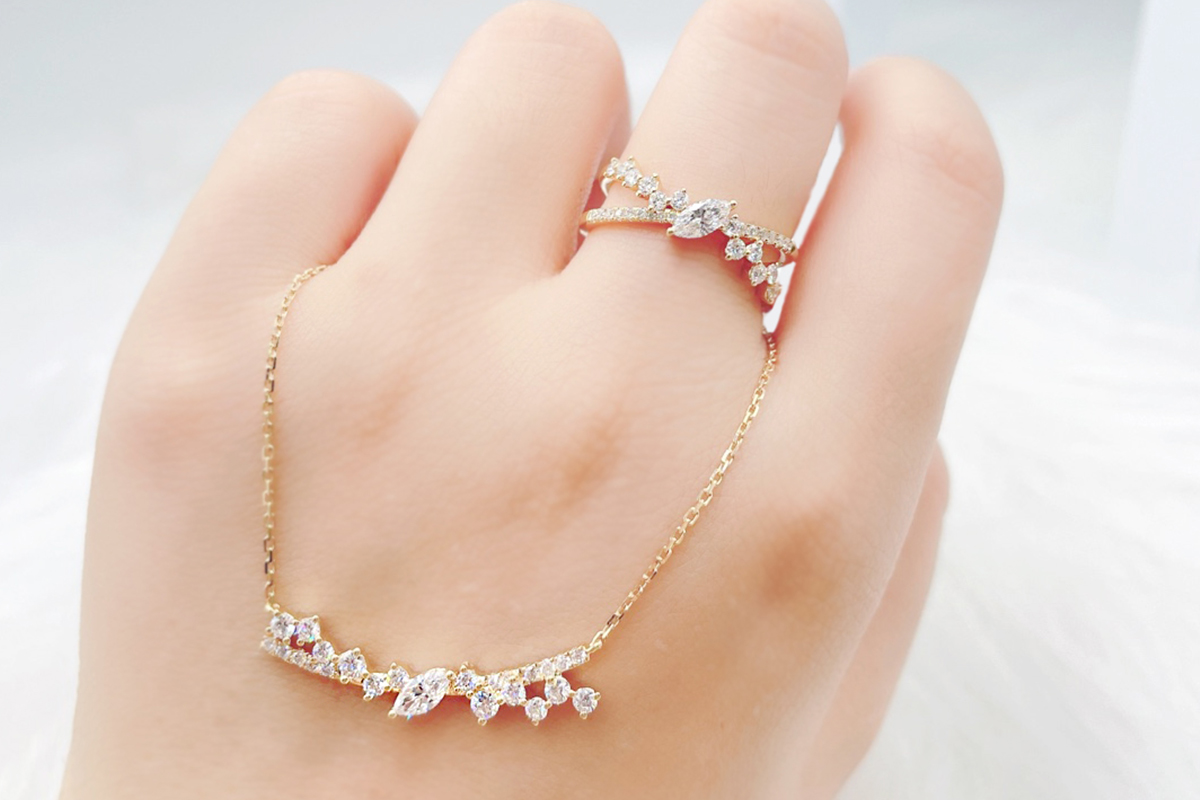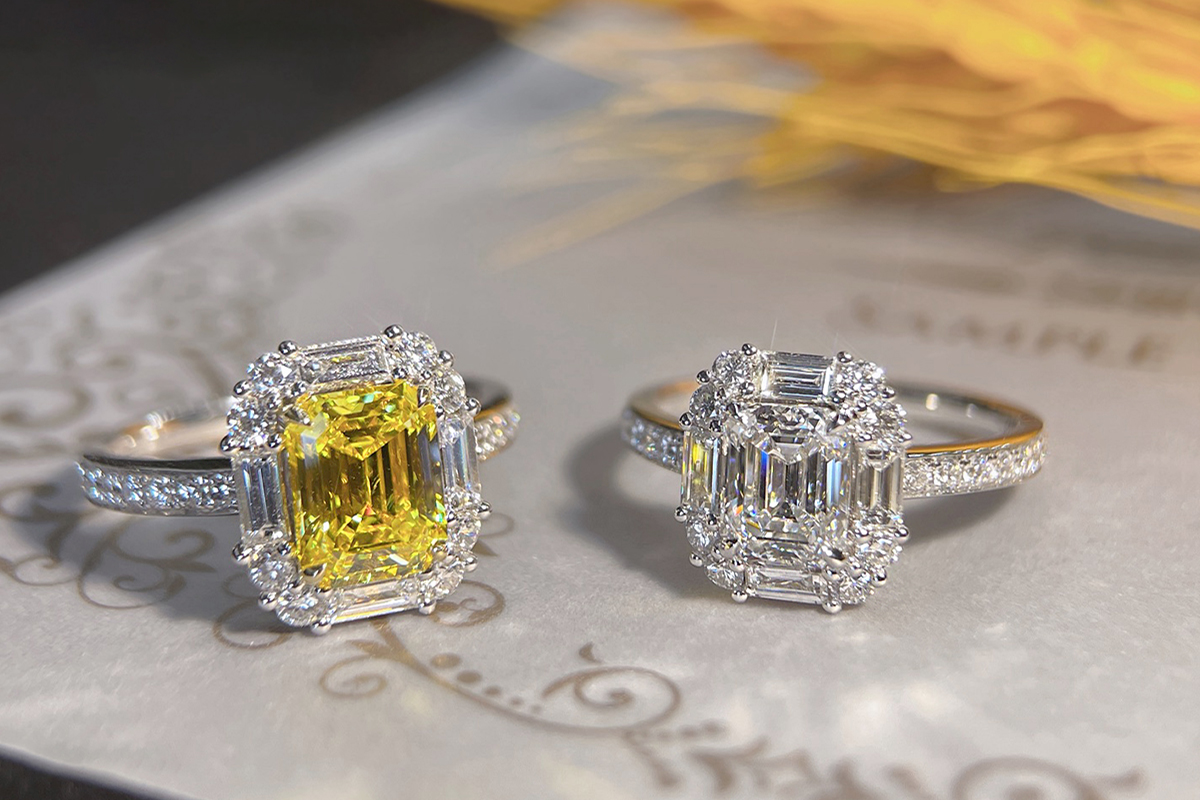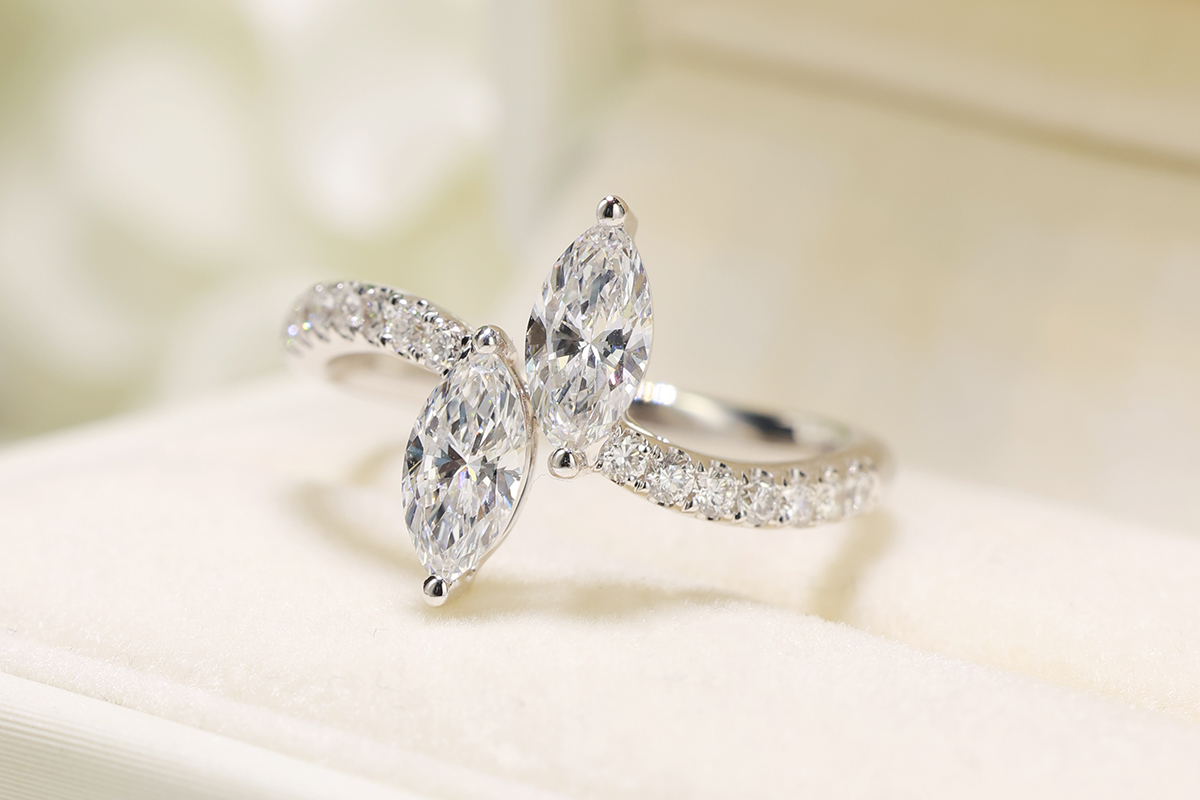Are Lab-Created Diamonds Real Diamonds?

Diamonds have long captivated human fascination with their brilliance and rarity. Recently, lab-created diamonds have surged in popularity due to their affordability and ethical appeal. This trend raises a compelling question: Are lab-created diamonds considered real diamonds? To answer this, we must examine their physical and chemical properties, as well as their market impact.
Understanding Diamonds

What Are Natural Diamonds?
Formation Process
Natural diamonds form deep within the Earth's mantle. Extreme heat and pressure cause carbon atoms to crystallize over millions of years. Volcanic eruptions then bring these crystals closer to the Earth's surface. Miners extract these diamonds from kimberlite pipes or alluvial deposits.
Characteristics
Natural diamonds possess unique characteristics. Each diamond has a specific crystal structure composed of pure carbon. The hardness of natural diamonds ranks at 10 on the Mohs scale, making them the hardest known natural material. Natural diamonds also exhibit a wide range of colors, from colorless to shades of yellow, brown, and even rare hues like blue and pink.
What Are Lab-Created Diamonds?
Creation Process
Lab-created diamonds form under controlled conditions in laboratories. Scientists replicate the natural diamond formation process using high-pressure, high-temperature (HPHT) methods or chemical vapor deposition (CVD) techniques.
HPHT Method: This method subjects carbon atoms to high temperatures and pressures, mimicking the natural environment of diamond formation. The process takes several weeks to produce a diamond crystal.
CVD Method: This technique involves placing a carbon-rich gas in a chamber. The gas breaks down, and carbon atoms deposit onto a substrate, forming a diamond layer by layer. This method also takes several weeks to complete.
Characteristics
Lab-created diamonds share identical characteristics with natural diamonds. Both types have the same crystal structure, composed of pure carbon. Lab-created diamonds also rank at 10 on the Mohs scale for hardness. These diamonds exhibit similar optical properties, including brilliance and fire. Lab-created diamonds often receive higher clarity grades due to the controlled conditions of their creation.
Are Lab-Created Diamonds Considered Real Diamonds?
Physical and Chemical Properties
Hardness
Lab-created diamonds and natural diamonds share the same hardness. Both types rank at 10 on the Mohs scale. This makes them the hardest known materials. The identical hardness ensures that lab-created diamonds can withstand daily wear and tear just like natural diamonds.
Composition
Lab-created diamonds consist of pure carbon atoms arranged in a crystal structure. This composition mirrors that of natural diamonds. High-pressure, high-temperature (HPHT) methods or chemical vapor deposition (CVD) techniques replicate the natural diamond formation process. This results in lab-created diamonds having the same physical and chemical properties as natural diamonds.
Visual Differences
Clarity
Lab-created diamonds often exhibit higher clarity grades compared to natural diamonds. Controlled laboratory conditions reduce the likelihood of inclusions and blemishes. However, lab-created diamonds can still contain some inclusions. These inclusions may affect their clarity grade but usually to a lesser extent than natural diamonds.
Color
Both lab-created and natural diamonds display a range of colors. Lab-created diamonds can achieve colorless grades more consistently due to controlled growth environments. Natural diamonds may show a broader spectrum of colors, including rare hues like blue and pink. Despite these differences, both types of diamonds can possess stunning visual appeal.
Value and Pricing
Market Trends
Lab-created diamonds have gained popularity due to their affordability and ethical sourcing. These diamonds offer a cost-effective alternative to natural diamonds. The growing demand for sustainable and conflict-free gemstones has driven market trends favoring lab-created diamonds. Consumers increasingly prefer lab-created diamonds for their ethical appeal and lower price points.
Resale Value
Natural diamonds generally hold higher resale value compared to lab-created diamonds. The rarity and historical significance of natural diamonds contribute to their higher market value. Lab-created diamonds, while identical in physical and chemical properties, may not fetch the same resale prices. However, the initial lower cost of lab-created diamonds can make them an attractive option for many buyers.
Common Misconceptions
Authenticity
Are Lab-Created Diamonds Fake?
Many people question the authenticity of lab-created diamonds. Some believe these diamonds are fake or inferior. However, lab-created diamonds possess the same physical and chemical properties as natural diamonds. Both types consist of pure carbon atoms arranged in a crystal structure. The hardness of lab-created diamonds matches that of natural diamonds, ranking at 10 on the Mohs scale.
Lab-created diamonds undergo rigorous grading and certification processes. Reputable labs like the Gemological Institute of America (GIA) and the International Gemological Institute (IGI) certify these diamonds. Each lab-created diamond receives a detailed report outlining its characteristics, including cut, color, clarity, and carat weight. This certification ensures buyers receive genuine diamonds.
Environmental Impact
Sustainability of Lab-Created Diamonds
Lab-created diamonds offer a more sustainable option compared to natural diamonds. The mining process for natural diamonds often involves significant environmental disruption. Large-scale mining operations can lead to deforestation, soil erosion, and water pollution. In contrast, lab-created diamonds form in controlled environments with minimal environmental impact.
The production of lab-created diamonds requires less energy and water than traditional mining. Scientists use advanced technology to replicate the natural diamond formation process. This method reduces the carbon footprint associated with diamond production. Consumers concerned about environmental sustainability often prefer lab-created diamonds for this reason.
Mining Impact of Natural Diamonds
Mining natural diamonds has significant environmental and social impacts. Diamond mining can cause habitat destruction and loss of biodiversity. The extraction process often involves removing large amounts of earth, leading to landscape alteration. Additionally, mining operations can contaminate local water sources with chemicals used in the extraction process.
The social impact of diamond mining also raises concerns. Some mining operations occur in conflict zones, where profits may fund armed conflicts. These "blood diamonds" contribute to human rights abuses and violence. Lab-created diamonds provide an ethical alternative, free from these issues. As Jean Dousset notes, "Lab diamonds remove the tension that mined diamonds present with the financial commitment and quality compromises many will end up making when considering a purchase."
Practical Advice for Buyers

How to Choose Between Lab-Created and Natural Diamonds
Personal Preferences
Personal preferences play a significant role in choosing between lab-created and natural diamonds. Some individuals value the historical and geological significance of natural diamonds. Others prioritize the ethical and environmental benefits of lab-created diamonds. The decision often reflects individual values and priorities.
Budget Considerations
Budget considerations also influence the choice between lab-created and natural diamonds. Lab-created diamonds generally cost less than natural diamonds. This price difference allows buyers to purchase larger or higher-quality diamonds within the same budget. Consumers should evaluate their financial situation and decide accordingly.
Certification and Grading
Importance of Certification
Certification ensures the authenticity and quality of diamonds. Reputable labs like the Gemological Institute of America (GIA) and the International Gemological Institute (IGI) provide detailed reports on diamond properties. These reports include evaluations of cut, color, clarity, and carat weight. Certified diamonds offer transparency and peace of mind to buyers.
Recognized Grading Labs
Several recognized labs grade both lab-created and natural diamonds. The GIA and IGI are among the most trusted institutions. The GIA is renowned for its rigorous grading standards, making it a preferred choice for natural diamonds. The IGI specializes in grading lab-created diamonds, providing detailed and reliable assessments. Other reputable labs include the American Gem Society (AGS), HRD Antwerp, and GCAL. Buyers should seek diamonds certified by these respected organizations to ensure quality and authenticity.
